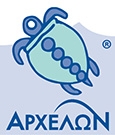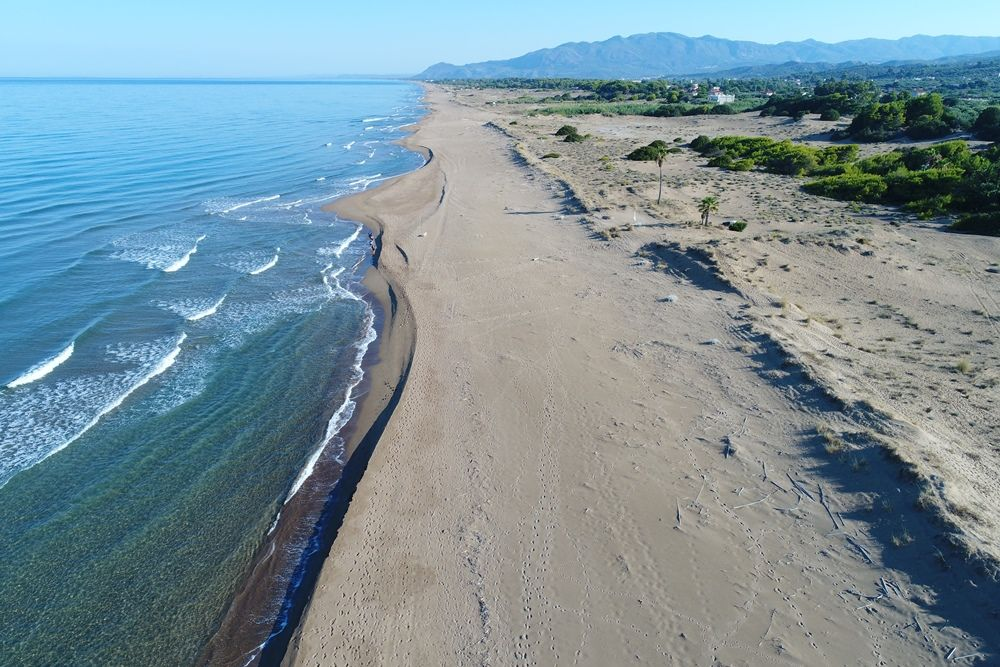The Peloponnese – Kyparissia Bay
Kyparissia Bay hosts the biggest reproductive population of the Loggerhead sea turtle (Caretta caretta) in the Mediterranean. The Nature Protection Area was established in 2018 and its goal is to protect the natural ecosystem of the coastal zone and the sea turtle breeding site from non-compatible human activities. The Bay is part of the European Ecological Network NATURA 2000.
ARCHELON's presence in Kyparissia Bay has been continuous since the early 1980s, carrying out research activities related to the monitoring and protection of sea turtle reproduction, while systematic nest counts began in 1984. In 2022, over 3,700 nests were recorded on 14.5 km of beach that are monitored daily by the program's researchers/volunteers.
You can meet the ARCHELON volunteers and learn more about sea turtles at the APOLLO camping in Giannitsochori, Ileia and at the old train station in Agiannakis, Messinia or book an informative Sea Turtle Beach Walk for your friends and family!
Attention beach users!
We all share this beach with the Loggerhead sea turtles, which lay their eggs here every summer.
How to reach the beach without disturbing the breeding sites of the sea turtles?
- Vehicle access from the main asphalt road towards the beach is only allowed through existing, marked, entry points. Construction or use of any new entry points is not allowed.
- Driving on the beach and sand dunes is forbidden.
- Pedestrian access to the beach is allowed through existing pathways. Trampling of sand dunes and their vegetation is not allowed.
- Fishing from the shore is allowed only during the day time.
Help us keep the beaches free of artificial lights: Ask everyone to turn off any lights that reach the beach after 11pm!
Mother sea turtles need free space in dark and quiet beaches to come ashore and lay their nests. When the baby turtles hatch, they will find their way to the sea by following following the reflection of moonlight on the water. Artificial lights on the beach confuse the hatchlings, which will lose their way to the sea, and will die from dehydration or cars.
When at sea...
- Boats must maintain a speed of 6 nautical miles (knots) or less to avoid collisions with sea turtles.
- Always remember sea turtles are wild animals – do not feed or touch them.
How to enjoy the beach without disturbing the breeding sites of the sea turtles?
- We are all welcome in the beach from sunrise to sunset. Please avoid the beaches during night hours.
- All beach furniture must be put away at night to allow space for sea turtles to nest.
- The use of artificial lights, bonfires and parties on the beach at night are not allowed.
- The cages and the protective grids over the nests are important – please respect them.
- The hatchlings must reach the sea on their own – please do not touch them.
- The beaches must stay clean – please do not litter.
- Ask for a presentation of ARCHELON in your hotel or camping site.



